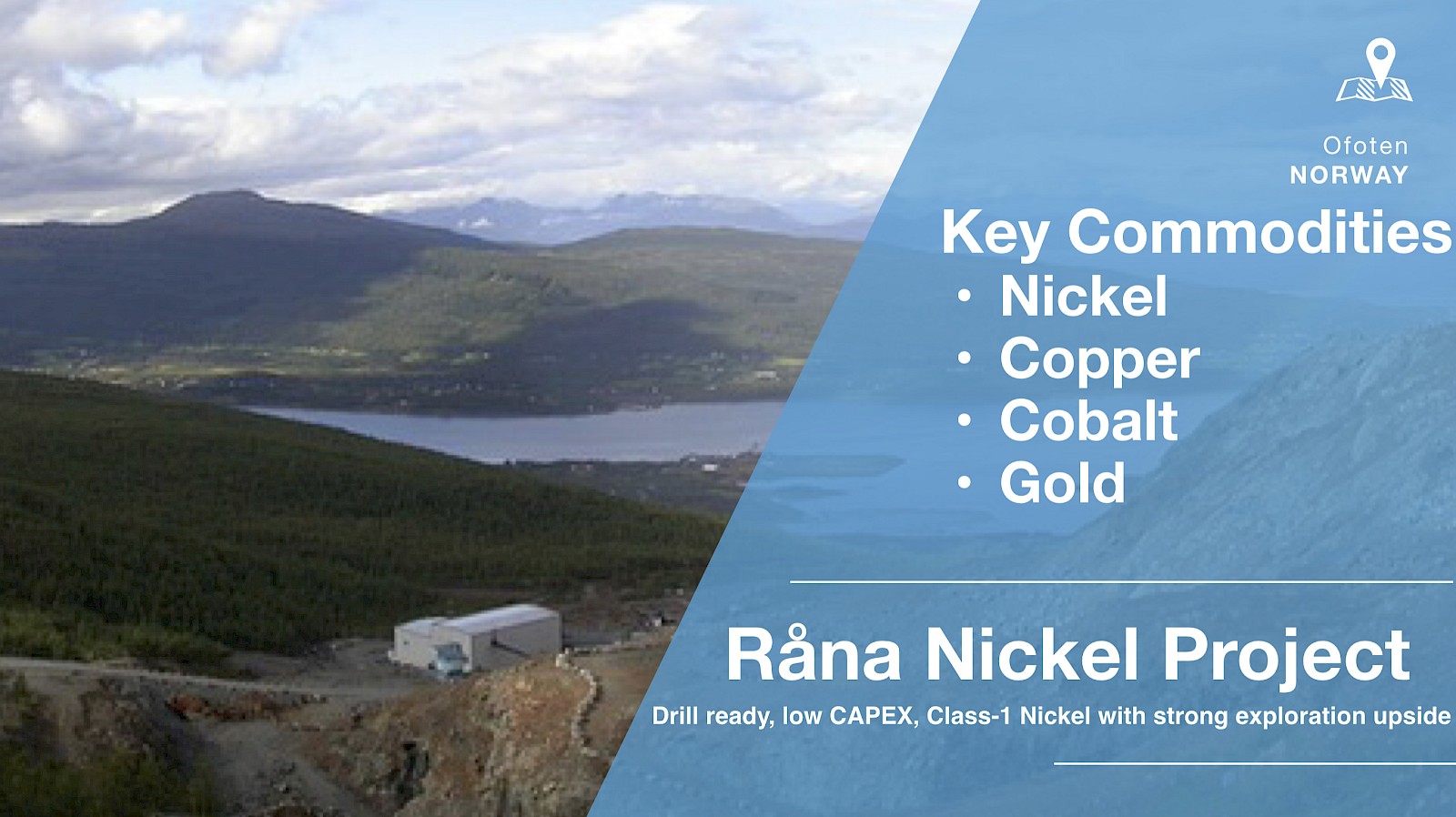Råna Nickel-Copper-Cobalt Project - Norway
-

With a limited number of quality nickel sulphide projects available worldwide, the Råna Project represents one of the few drill-ready, low capex Class-1 nickel opportunities globally that has strong mining potential and exploration upside and presents as an opportunity as a future source of material suitable for the rechargeable battery sector. Global Energy Metals intends to work alongside the Vendor, to attract strategic partners to fund project development at the Råna Nickel Project while leveraging its interest to create shareholder value through exploration success.
The project portfolio includes three exploration licences including the past producing Bruvann Nickel Mine in the Råna mafic-ultramafic intrusion (Arnes, Bruavatnet and Rånbogen) and a fourth exploration licence (Krokelva), that lies outside the intrusion, west of the Bruvann Nickel mine (collectively “The Råna Nickel Project”).
The Råna Nickel Project licence area totals 25km2 and is located on the south shore of Ofotfjord, which is ice-free year-round, 2km away from a shipping dock, with work force and infrastructure in place and in close proximity to a growing end-user market including FREYR AS, a Norwegian incorporated company that is developing environmentally friendly lithium-ion based battery cell facilities in Mo i Rana, Northern Norway.
Project Highlights:
- The Råna intrusion hosts the Bruvann Nickel (copper and cobalt) mine with 9.15MT remaining resources (not including ore-grade pillars) in the underground mine;
- The mine is open-ended in three directions that have been under-explored;
- Bruvann mine was operated from 1989 to 2002 at an average nickel price below USD $4/lb;
- Excellent near-mine potential;
- Re-interpretation of geophysical survey data (including newly derived geological model) confirms six new drill targets;
- Strong correlation between modelled conductors and surface mineralisation, including surface samples with up to 2.34% Ni, 0.27% Cu and 0.20% Co (2.98% Ni eq);
- Drill hole intersection of 13.5m at 0.62% Ni, 0.13% Cu and 0.06% Co (0.83% Ni eq) in the margins of a large conductor;
- Channel sample with 6.5 m at 0.63% Ni, 0.19% Cu and 0.07% Co (0.90% Ni eq) in the margins of a second large conductor;
- The prospect lies on an ice-free fjord and Norway’s main N-S highway; and
- Much of the mine infrastructure is still in place and maintained (roads, power lines, conveyor belt to the shipping dock just 2 km away).
Recent Exploration:
- Airborne TEM investigations in 2005 and 2006 – Penetration down to 300m;
- 16 drill holes totalling 3,982m during 2006 and 2007, intersecting both disseminated, vein type and massive sulphide mineralization;
- Sulphide isotopic study in 2008;
- Airborne EM and aeromagnetic survey conducted by the Geological Survey of Norway in 2015;
- >4,000 soil samples, >400 rock samples creating a geochemical map of Rånbogen;
- Modelling of gravity data;
- 3D computer modelling of the ore body in the mine; and
- A new derived geological model in 2019 has identified 6 new targets in addition to multiple high-priority targets previously identified proximal to anomalous nickel bearing rock samples grading up to 2.34% Ni.
